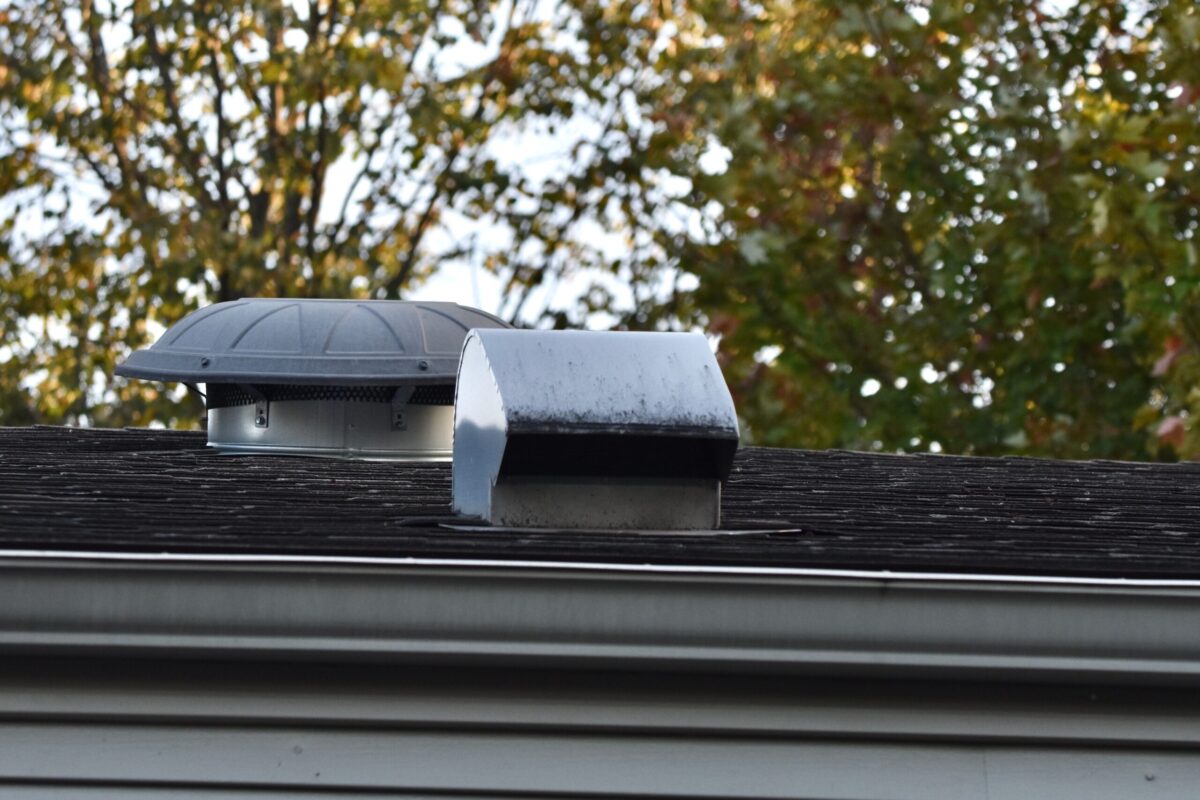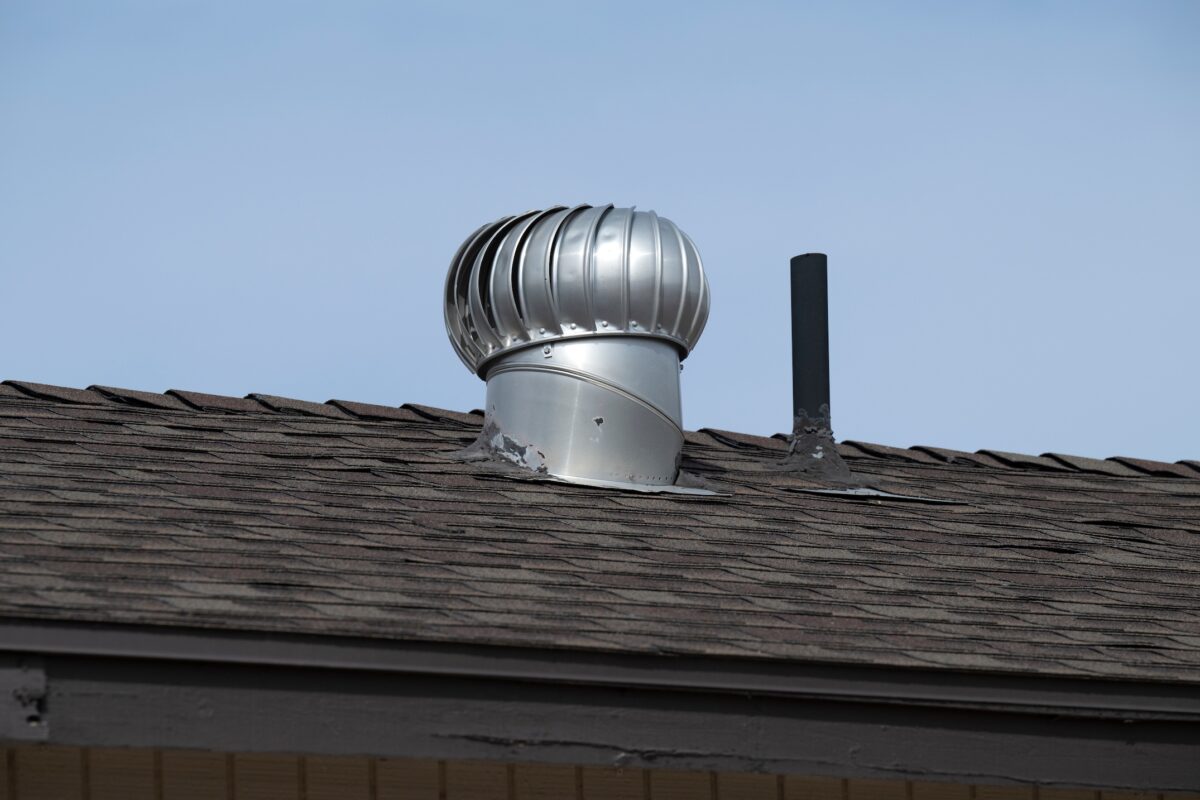Your roof does more than just keep rain out—it’s a complex system that needs proper airflow to function effectively. Roof vents play a crucial role in maintaining your home’s comfort, energy efficiency, and structural integrity. Without adequate ventilation, you could face expensive problems like ice dams, mold growth, and premature roof deterioration.
Whether you’re planning a roof replacement or simply want to understand your home better, learning about residential roofing ventilation systems can save you thousands in future repairs. Proper ventilation helps regulate attic temperatures, prevents moisture buildup, and extends your roof’s lifespan.
This comprehensive guide will cover:
- Why proper roof ventilation is essential for your home
- The main types of roof vents and their specific benefits
- How to choose the right ventilation system for your property
- Professional installation considerations
🏠 Why Roof Ventilation Is Important

Proper roof ventilation creates a balanced airflow system that protects your entire home. When hot air can escape through exhaust vents while cool air enters through intake vents, your roof system operates as intended.
Without this balance, several costly problems can develop:
- Moisture damage: When humidity gets trapped in your attic, it creates the perfect environment for mold, mildew, and wood to rot, which can lead to costly repairs.
- Ice dams: In winter, poor attic ventilation causes uneven roof temperatures, leading to ice dams that can damage shingles and cause leaks.
- Energy waste: Without proper ventilation, attic temperatures can skyrocket in summer, forcing your HVAC system to work overtime and driving up energy bills.
- Shortened roof life: Excess heat buildup in the attic accelerates the wear and tear on shingles and roofing materials, reducing their lifespan.
- Insulation problems: Moisture in the attic can soak into your insulation, making it less effective and requiring replacement to maintain energy efficiency.
✅ 6 Types of Roof Vents You Should Know About

Understanding your ventilation options helps you make informed decisions about your roofing system. Each type serves specific purposes and works best in certain situations.
1. Ridge Vents
Ridge vents run along the peak of your roof, providing continuous exhaust ventilation. These vents blend seamlessly with your roofline and offer excellent performance for most homes.
- Work with natural convection to draw hot air up and out
- Provide uniform ventilation across the entire roof ridge
2. Soffit Vents
Installed under your roof’s eaves, soffit vents allow fresh air to enter your attic space. They work as intake vents that complement exhaust vents higher on your roof.
- Create the airflow foundation for proper ventilation
- Available in continuous strips or individual vent covers
3. Gable Vents
These triangular or rectangular vents are installed in your home’s gable ends. They can function as both intake and exhaust vents depending on wind direction.
- Provide cross-ventilation in certain weather conditions
- Often used in combination with other vent types for optimal airflow
4. Turbine Vents
Also called whirlybird vents, these spinning units use wind power to pull air from your attic. They’re highly effective in windy areas and require no electricity.
- Move large volumes of air when wind is present
- Work best when paired with adequate intake ventilation
5. Static Vents
These simple, low-profile vents have no moving parts and rely on natural air pressure differences. They’re affordable and virtually maintenance-free.
- Provide consistent exhaust ventilation without mechanical parts
- Available in various sizes to match your home’s ventilation needs
6. Power Vents
Electric exhaust fans actively pull hot air from your attic space. Some models include thermostats and humidistats for automatic operation.
- Offer precise control over attic ventilation
- Work effectively even when natural airflow is limited
⚖️ Choosing the Right Ventilation System

Selecting the best roof vents depends on several factors specific to your home and local climate. Professional roofers evaluate these elements to recommend the most effective solution.
Climate Considerations
Your local weather patterns significantly influence ventilation needs. Different climates demand tailored approaches to ensure proper functionality and long-term durability of your ventilation system.
- Hot, humid climates: Require robust moisture control to prevent mold, mildew, and rot from forming. Proper ventilation is essential to manage excess humidity effectively.
- Cold climates: Need systems that prevent ice dam formation by maintaining consistent attic temperatures. This minimizes the risk of structural damage caused by melting and refreezing snow.
- Moderate climates: May require a balanced approach to manage seasonal changes, ensuring ventilation systems perform well year-round.
Roof Design Factors
Your roof’s slope, size, and architectural style determine which vents will work best. Proper planning ensures full coverage and optimal airflow.
- Steep slopes: Allow hot air to rise and escape more effectively, but may need ridge or soffit vents for efficient circulation.
- Flat or low-slope roofs: Often require mechanical ventilation or specialized vents to prevent stagnant air.
- Complex rooflines: Homes with multiple angles or intricate designs may need a combination of vent types to provide complete coverage and consistent airflow.
Attic Space Configuration
The size and layout of your attic space affects airflow patterns, making it crucial to assess your attic’s unique requirements for proper ventilation.
- Larger attics: Typically need more ventilation capacity, including additional intake and exhaust vents, to promote adequate air circulation.
- Smaller attics: May require fewer vents, but careful placement is key to avoid dead zones where air becomes trapped.
- Partitioned attics: Spaces divided by walls or structures may need separate ventilation systems to ensure air flows freely throughout.
Energy Efficiency Goals
Modern homes with high-performance insulation and airtight designs require ventilation systems that balance airflow without compromising energy efficiency.
- High-performance insulation: Demands sophisticated ventilation to prevent overheating and moisture buildup while maintaining energy savings.
- Energy recovery systems: Can integrate with ventilation to recycle heat or cool air, improving overall home efficiency.
- Sustainable designs: Look for eco-friendly ventilation options to align with green building practices and reduce environmental impact.
🔧 Ready to Improve Your Roof Ventilation?
Proper roof ventilation protects your investment and keeps your family comfortable year-round. The right combination of intake and exhaust vents creates an efficient system that prevents costly moisture problems and reduces energy bills.
Professional installation ensures your ventilation system works correctly from day one. Our experienced team at K&D Roofing can assess your current ventilation and recommend improvements that fit your budget and needs. Contact us today for a free inspection and discover how proper roof ventilation can benefit your home.

